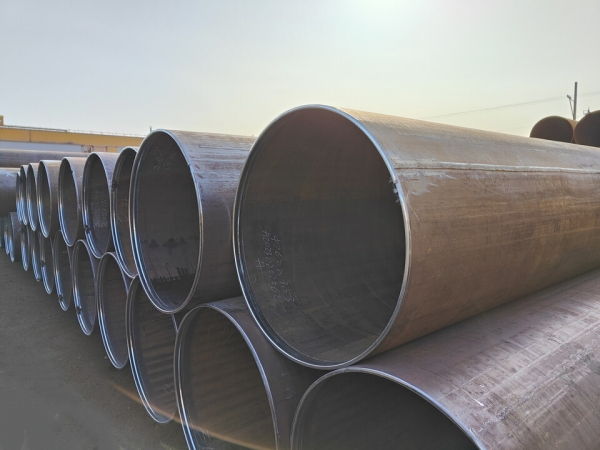Longitudinal Submerged Arc Welded (LSAW) steel pipes may undergo heat treatment to improve their mechanical properties and relieve internal stresses resulting from the welding process. The heat treatment process for LSAW steel pipes typically involves two main procedures: normalization and stress relief annealing. This article will talk about heat treatment of LSAW steel pipe.

Normalization:
1. Objective: Normalize the microstructure of the steel to enhance its mechanical properties and ensure uniform material characteristics.
2. Procedure:
- Heating the LSAW steel pipe to a temperature above the transformation range (typically 900°C to 980°C).
- Holding the pipe at this temperature for a specified period.
- Cooling the pipe in still air.
Stress Relief Annealing:
1. Objective: Alleviate residual stresses within the steel pipe, which may have been induced during the welding process.
2. Procedure:
- Heating the LSAW steel pipe to a temperature below the critical range but sufficiently high to relieve stresses (typically around 600°C to 700°C).
- Holding the pipe at this temperature for a specified duration.
- Gradual cooling of the pipe in the furnace or air.
Key Considerations:
- The specific heat treatment parameters, including temperature and duration, depend on factors such as the steel grade, pipe dimensions, and intended service conditions.
- Heat treatment is often performed after the welding process to refine the microstructure and improve the overall performance of the steel.
- The heat treatment process should be carefully controlled to avoid over-heating or under-heating, which can adversely affect the mechanical properties of the steel.
Benefits of Heat Treatment for LSAW Steel Pipes:
- Improved Mechanical Properties:
Heat treatment can enhance the strength, toughness, and ductility of the steel, providing better performance in various applications.
- Reduced Residual Stresses:
Stress relief annealing helps minimize the risk of cracking and distortion by alleviating residual stresses introduced during welding.
- Uniform Microstructure:
Normalization contributes to a more uniform microstructure throughout the steel, reducing variations in mechanical properties.
It's essential to adhere to industry standards and specifications (such as API 5L for line pipes) and consult with materials and welding engineers to determine the most suitable heat treatment regimen for specific LSAW steel pipe applications.